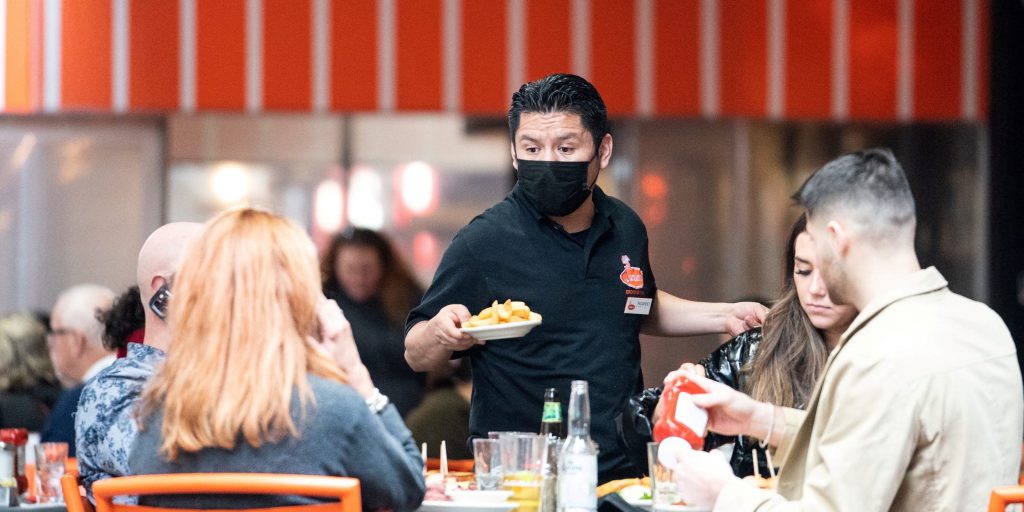- US retail sales unexpectedly fell 0.3% in May as inflation accelerated again.
- The print landed below the median estimate of 0.2% growth and showed a slowdown from April's pace.
- The report signals the fastest price growth since 1981 started to cut into Americans' demand.
Americans' spending at stores, restaurants, and bars unexpectedly tumbled through May as inflation accelerated to an even faster pace.
Retail sales fell 0.3% last month to $672.9 billion, the Census Bureau announced Thursday. Economists surveyed by Bloomberg anticipated an increase of 0.2%. The print reflects slower spending growth than the 0.7% gain seen through April.
The April sum was revised to $674.7 billion from $677.7 billion.
Core retail sales, which strip out spending on cars and vehicle parts, gained 0.5% through the month. That still landed below the median estimate of a 0.8% gain.
The report shows Americans starting to ease their spending activity as inflation runs even hotter. Prices for common goods and services surged 8.6% in the year through May, according to data out Friday, marking the fastest inflation since December 1981. The retail sales data suggests those soaring prices are finally starting to erode Americans' demand.
Spending eased the most at car dealerships and parts stores, with the category posting a 3.5% decline in sales through May. Electronics and appliance stores followed with a 1.3% decline in sales. Health and personal care stores, nonstore retailers, and furniture stores also saw sales decline last month.
Gas stations notched the largest jump in sales, with spending up 4% in May. Higher gas prices powered at least some of the uptick. The national average price for a gallon of gasoline hit multiple record highs throughout the month as strong demand continued to outstrip supply. When adjusted for price growth, sales at gas stations declined slightly throughout the month.
Spending at grocery stores rose 1.2%, and department stores followed with a 0.9% gain in sales.
Spending was relatively unchanged at general merchandise stores, clothing shops, and building material and garden stores.
The slight decline in broad spending could mark the start of a longer cooldown of consumer demand. The inflation problem was borne out of too much demand chasing down too little inventory, and with supply chains far from operating at full capacity, the Federal Reserve has prioritized weakening demand to slow price growth. The central bank has already lifted interest rates twice and is expected to issue another larger-than-usual rate hike Wednesday afternoon. Those increases lift borrowing costs throughout the economy, making mortgages, car loans, and credit card debt pricier.
Cooling inflation by easing demand is a risky venture, however. Raising interest rates too slowly can allow inflation to continue climbing. Yet acting too quickly can slow the economy too much and bring growth to a heel. With prices surging at the fastest pace in four decades and demand only just starting to show signs of slowing, all eyes will be on the Fed as it takes its next step to curb inflation.

